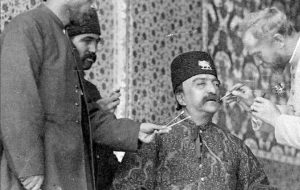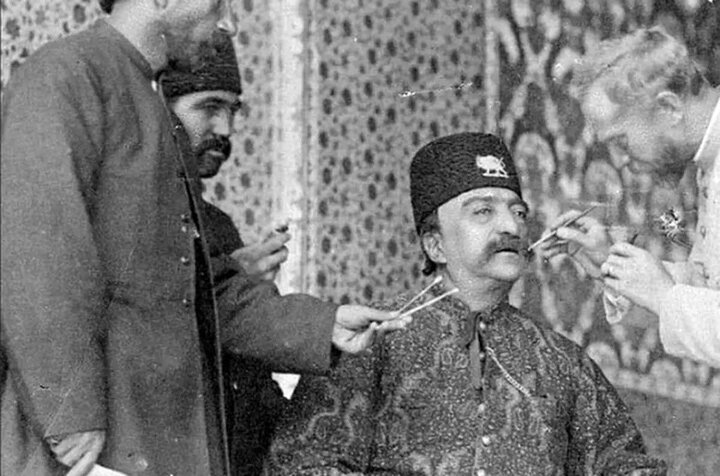170-year-old fragrance of Naser al-Din Shah’s perfume rediscovered
TEHRAN – In an extraordinary discovery, curators at Tehran’s Dafineh Museum recently encountered the lingering scent of a perfume belonging to Naser al-Din Shah Qajar, a ruler of 19th-century Persia, from a bottle crafted nearly 170 years ago. The perfume bottle, part of Naser al-Din Shah’s personal grooming set, is a centerpiece of the museum’s


TEHRAN – In an extraordinary discovery, curators at Tehran’s Dafineh Museum recently encountered the lingering scent of a perfume belonging to Naser al-Din Shah Qajar, a ruler of 19th-century Persia, from a bottle crafted nearly 170 years ago.
The perfume bottle, part of Naser al-Din Shah’s personal grooming set, is a centerpiece of the museum’s collection, Mehr reported on Sunday.
The set, made with the finest materials and commissioned from renowned global brands of the time, highlights the luxurious lifestyle of the Qajar king. Among the remarkable items is a shoehorn crafted from turtle shell, exemplifying the exclusivity of the collection, the report said.
A fragrance that stood the test of time
The perfume bottle, attributed to Louis Vuitton, still exudes a subtle scent, defying the passage of nearly two centuries.
Museum experts were astonished when the delicate aroma was detected upon opening the bottle.
This rare artifact is housed in the gallery of gems and historical adornments, part of the Dafineh Museum, located on Mirdamad Boulevard in Tehran. The museum, which showcases a wide array of historical treasures, is open to visitors daily except Saturdays.
Naser al-Din Shah was the fourth Shah of Qajar Iran from 5 September 1848 to 1 May 1896 when he was assassinated by Mirza Reza Kermani during a visit to the Shah Abdol-Azim Shrine.
It is said that the revolver used to assassinate him was old and rusty and had he worn a thicker overcoat or been shot from a longer range, he would have survived the attempt on his life.
Nasser-al-Din Shah’s assassination and the subsequent execution of Mirza Reza Kermani marked a turning point in Iranian political thought that would ultimately lead to the Iranian Constitutional Revolution during his successor Mozzafar-al-Din Shah’s turbulent reign.
The monarch was buried in the Shah Abdol-Azim Shrine, in Ray, southeast Tehran, where he was assassinated.
AM
